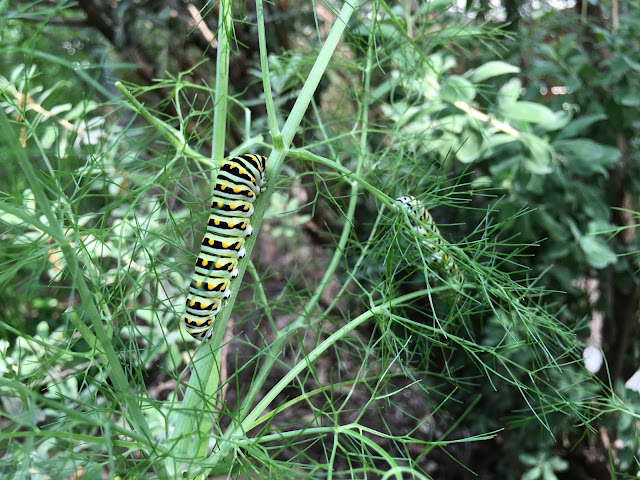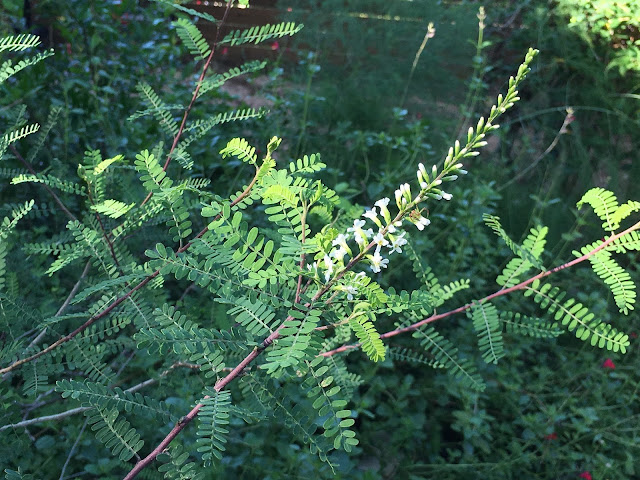I only planted two tomatoes this year, but they are producing in abundance- yum!
In the middle back my Peter's purple monarda has attracted a Question Mark butterfly and is glowing aside my cenizos (now blooming again today after the rains this week). The native grasses are filling into my old lawn space and my wildflower seed areas have fuzzy basketflowers that smell like honey. The neighborhood house sparrows (along with the doves, grackles, blue jays and cardinals) empty the bird feeder within hours of filling.
In the sunny far back the flame acanthuses (acanthi?) have filled in along with coneflowers, tropical salvia and milkweed. All attract fliers such as horsefly-like carpenter bees (on the coneflower) as well as blue mud dauber wasps (which buzz and flop around me dramatically but leave me alone).
The relocated bird feeder in front of our dining table and front window is also full of activity, from a cardinal pair cheeping from nearby tree branches before dropping down to a sweet titmouse (as well as the requisite too-heavy doves and blue jays).
The front bed (reclaimed from lawn a couple of years ago) has filled in with (native or adapted) cottage garden flowers. It is slowly becoming full of coneflowers that reseed every year- no complaints from me! Along the driveway the tough St. Johns Wort (present from before we bought the house 10 years ago) is blooming reliably. The fall asters have become confused and have put out cheerful purple blooms, too.
Everything is lush and the wildlife happy- the native critters and I will enjoy the greenery while it lasts! Thanks to Tina at https://mygardenersays.com for hosting Wildlife Wednesday.


























































